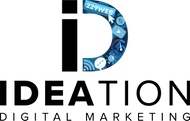Security in Web Development Safeguarding Your Digital Assets
In the vast landscape of cyberspace, where the digital realm intertwines with everyday life, security stands as the cornerstone of trust and reliability. "Security in Web Development: Safeguarding Your Digital Assets" is not merely a title but a clarion call to action in the ever-evolving landscape of web development. In an age where digital assets are the lifeblood of businesses, organizations, and individuals alike, fortifying the virtual ramparts against the relentless tide of cyber threats is paramount. This imperative extends beyond mere protection; it encompasses the preservation of integrity, confidentiality, and availability the pillars of information security. Through a multidimensional lens, this discourse delves into the intricate interplay between technology, human factors, and emerging paradigms to elucidate the nuanced tapestry of web security. From robust encryption protocols to resilient authentication mechanisms, from vigilant threat detection to proactive risk mitigation strategies, every facet of safeguarding digital assets is meticulously explored. Embracing this ethos of security is not a luxury but a necessity, a linchpin in fostering digital resilience and perpetuating trust in an interconnected world.
Understanding Web Vulnerabilities: Identifying and Addressing Threats
Understanding web vulnerabilities is paramount in safeguarding digital assets. By comprehending common threats like cross-site scripting (XSS), SQL injection, and cross-site request forgery (CSRF), developers can proactively address vulnerabilities. Regular security audits and testing are essential to identify weaknesses in web applications. Once vulnerabilities are recognized, prompt action can be taken to mitigate risks and prevent potential breaches. An in-depth understanding of web vulnerabilities empowers developers to implement robust security measures and protect sensitive data from exploitation by malicious actors.

Secure authentication mechanisms are fundamental in protecting user accounts from unauthorized access. Utilizing strong password policies, multi-factor authentication (MFA), and secure session
management techniques can significantly enhance the security of authentication systems. Developers should prioritize implementing industry-standard encryption protocols like HTTPS to secure the transmission of authentication credentials over the network. Additionally, regularly updating authentication mechanisms and promptly addressing security vulnerabilities can thwart potential attacks and safeguard user accounts from compromise.
Data Encryption Techniques: Shielding Sensitive Information from Prying Eyes
Data encryption is a critical component of web security, ensuring sensitive information remains protected from unauthorized access. Employing robust encryption algorithms like AES (Advanced Encryption Standard) or RSA (Rivest–Shamir–Adleman) can effectively shield data at rest and in transit. Implementing encryption protocols such as TLS/SSL for securing communication channels adds an extra layer of protection, preventing eavesdropping and data interception. By encrypting sensitive data before storing it in databases or transmitting it over networks, developers can mitigate the risk of data breaches and uphold the confidentiality and integrity of user information.
Best Practices in Input Validation: Preventing Injection Attacks
Implementing best practices in input validation is essential for thwarting injection attacks, such as SQL injection and cross-site scripting (XSS). Validating and sanitizing user input effectively prevents malicious code injection, ensuring that only expected data formats are accepted. Utilizing parameterized queries in database interactions and encoding output data before rendering it in web pages can significantly reduce the risk of injection attacks. Comprehensive input validation routines should be integrated into the development process to enforce data integrity and prevent attackers from exploiting vulnerabilities in web applications.
Securing Communication Channels: Ensuring Data Integrity and Confidentiality
Securing communication channels is imperative to uphold data integrity and confidentiality in web development. Employing encryption protocols like Transport Layer Security (TLS) or Secure Sockets Layer (SSL) establishes secure connections between clients and servers, preventing unauthorized interception of data during transmission. Additionally, implementing secure HTTP headers, such as HTTP Strict Transport Security (HSTS) and
Content Security Policy (CSP), mitigates the risk of common web security threats like man-in-the-middle attacks and cross-site scripting (XSS). By prioritizing the use of encrypted communication protocols and enforcing secure communication practices, developers can safeguard sensitive information from unauthorized access and maintain the trust of users accessing their web applications.

Managing Access Control: Restricting Unauthorized Entry to Your System
Implementing robust access control measures is crucial for maintaining the security of your system. By carefully managing user permissions and privileges, you can prevent unauthorized access to sensitive data and functionalities.
- Establishing User Roles and Permissions: Define specific roles within your system and assign appropriate permissions to each role based on the principle of least privilege.
- Implementing Authentication Mechanisms: Utilize strong authentication methods such as passwords, biometrics, or multi-factor authentication to verify the identity of users attempting to access your system.
- Monitoring and Auditing Access Logs: Regularly monitor access logs to detect any unauthorized attempts to access your system and audit user activities to ensure compliance with security policies.
- Enforcing Access Control Policies: Implement access control policies to restrict access to sensitive data and functionalities based on user roles, ensuring that only authorized users can perform certain actions.
By effectively managing access control, you can minimize the risk of unauthorized entry to your system and safeguard your digital assets from potential security breaches.
Continuous Monitoring and Incident Response: Staying Vigilant Against Emerging Threats
Continuous monitoring and proactive incident response are essential components of a robust cybersecurity strategy. By continuously monitoring your systems for suspicious activities and promptly responding to security incidents, you can mitigate the impact of emerging threats and protect your digital assets.
- Implementing Security Monitoring Tools: Deploy intrusion detection systems (IDS), security information and event management (SIEM) solutions, and other monitoring tools to detect anomalous behavior and potential security incidents in real-time.
- Establishing Incident Response Procedures: Develop comprehensive incident response procedures outlining the steps to be taken in the event of a security incident, including containment, eradication, recovery, and post-incident analysis.
- Conducting Regular Security Assessments: Perform regular security assessments, including vulnerability scanning and penetration testing, to identify and remediate security weaknesses before they can be exploited by attackers.
- Collaborating with Security Professionals: Establish partnerships with cybersecurity experts and information sharing networks to stay informed about emerging threats and best practices in incident response.
By maintaining continuous monitoring and a proactive incident response capability, you can effectively mitigate the risks posed by emerging threats and protect your organization's digital assets from cyberattacks.
Conclusion
Prioritizing security in web development is paramount for safeguarding your digital assets. With cyber threats evolving rapidly, implementing robust security measures is essential to protect sensitive data and maintain the trust of your users. By staying proactive and investing in technologies like encryption, firewalls, and regular security audits, businesses can mitigate the risk of cyber attacks and prevent costly breaches.
For further inquiries or assistance in fortifying your web development security, feel free to reach out to Ideation Digital Marketing. Located in Charleston, WV, our team specializes in creating secure and resilient digital solutions tailored to your business needs. Contact us at (304) 814-2445 to discuss how we can help safeguard your online presence and ensure peace of mind for you and your customers.














